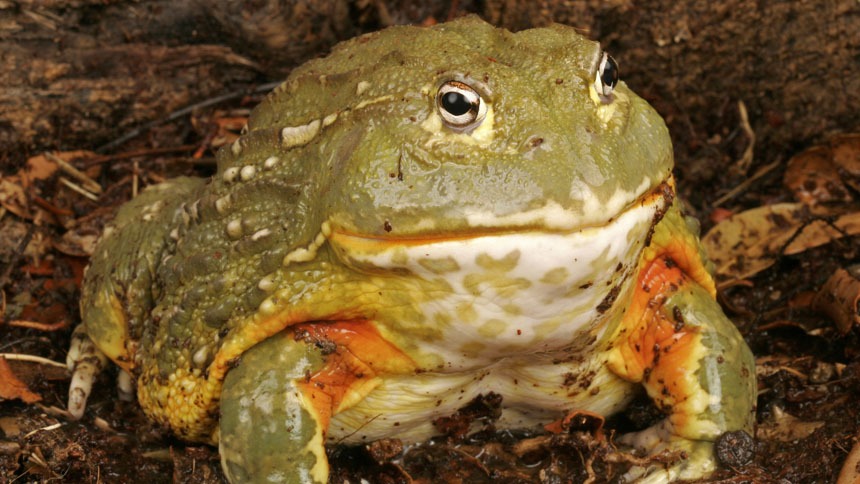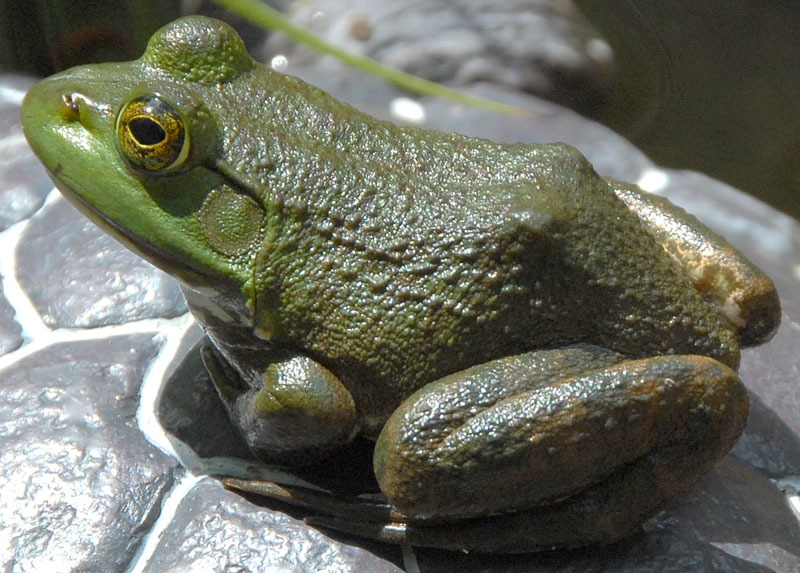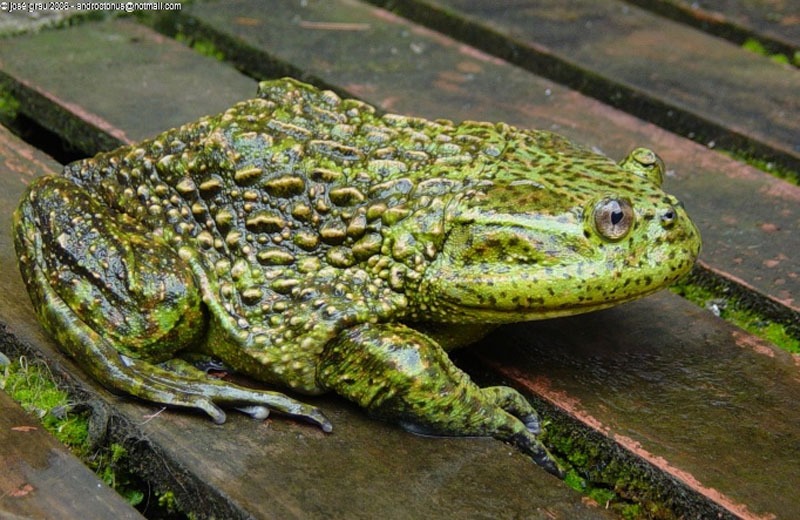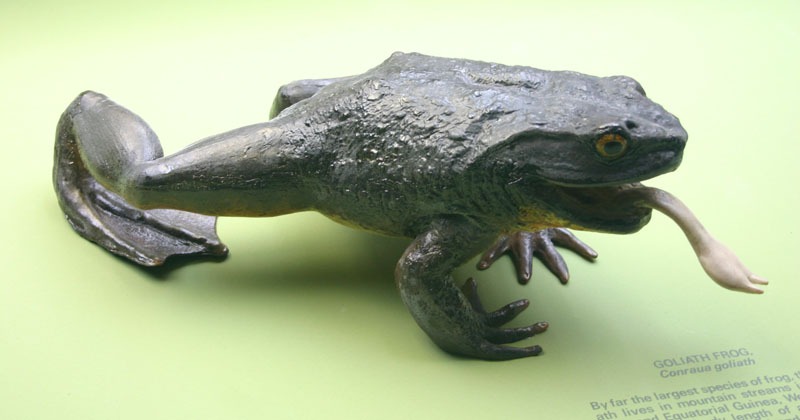
4 Biggest Bullfrogs in the World
“Bullfrog” is a common English term used to describe large, aggressive frogs – regardless of species. It’s a common name, not tied to the taxonomic classification. Currently, there are at least 15 species having the word “bullfrog” in their name.
Bullfrogs are one of the largest types of frogs and they’re usually the dominant ones in their area. They’re persistent hunters, with hind legs that can jump 7 feet from their current location, they can easily target a fair amount of sizable prey.
Because of its size, there is a possibility they could end up invasive in non-endemic regions. Hence, it is advantageous on their end but awfully destructive to other animals who ended up as their food.
Location-wise, they are found in parts of America, Australia, Africa, and Asia. Countries such as Vietnam and Cambodia consider frogs as a prime food choice as well. It is bullfrogs that they prefer to hunt, considering their large size.
So, which ones are the largest? Here, we broke it down to the top 4 biggest bullfrogs in the world.
Page Contents
American Bullfrog

First on this list is the American Bullfrog (Lithobates catesbeianus). On a taxonomic point, it belongs to the order Anura and Ranidae as its family. This specific bullfrog is named after its habitat (eastern Northern America) and the baritone call it creates, which resembles a mooing cow.
This amazing creature can grow to a length of 8 inches or more and weigh up to 1.5 pounds. Even tadpoles for their size are surprisingly big – one could reach 6.75 in length.
Given their size, they’re sometimes hunted as a food source. Unfortunately, their further distribution around the world as food resulted in them being an invasive species. Their existence outside their native range puts a negative effect on other amphibians and faunas.
Typically, American bullfrogs are greenish or gray-brownish in color and have identifiable eardrums or tympanum on either side of their heads.
Consequently, this color allows them to hide from their prey. They sit quietly and patiently wait for their prey to let their guards down, then jump with their legs, stick their tongues out then quickly return back to the water.
African Bullfrog

The African Bullfrog or Pixie Frog (Pyxicephalus adspersus) is the third-largest bullfrog on our list, right next to the Chilean Helmeted Bullfrog. From a taxonomic standpoint, it belongs to the Pyxicephalidae family. Pixie, being one of its common names, actually originated from its scientific name.
Being the third largest among bullfrogs, it could be compared to the size of a football. Male African bullfrogs can weigh up to 3 lbs and can reach 9.5-inches from snout to vent. However, females of this kind are only half the size of males. This is unusual since, in most amphibians, females are typically bigger than males.
When it comes to their diet, it is a voracious carnivore. They love to devour small reptiles, such as snakes, other amphibians, fish, insects, and even small mammals like mice. Not only that, but they are also cannibalistic in nature.
Chilean Helmeted Bullfrog

The Chilean Helmeted Bullfrog or Helmeted Water Toad (Calyptocephalella) is the second-largest bullfrog on our list, next to Goliath Bullfrog. On the taxonomic point, it belongs to the Calyptocephalellidae family.
Curious as to its size? Apparently, this very large amphibian can reach a snout-to-vent length of up to 12.5-inches and weigh up to 6.5 lbs.
Mature Chilean helmeted bullfrogs are brown, green, and yellow in color while the oldest appears to be grayish or have gray patches on dark background.
In terms of reproduction, these creatures are aggressive. Compared to goliath bullfrogs that cannot produce mating calls, helmeted frogs have an aggressive call specifically designated to other individuals of the same species.
Tadpoles of this kind mostly eat algae, detritus, and insect larvae. On the other hand, adults eat whatever fits into their mouths – invertebrates, small birds, small mammals, and other frogs.
Goliath Bullfrog

The Goliath Bullfrog, also known as the “Giant Slippery Frog” (Conraua Goliath), is the biggest frog on planet Earth. This creature can grow up to 12.5-inches in length from its snout to vent and weigh up to 7 lbs. Just imagine your typical house cat – that’s how big a goliath bullfrog is!
Strangely enough, these enormous bullfrogs lack a vocal sac. Because of this, they cannot produce mating calls. Goliath tadpoles are picky eaters, feeding mostly on Dicraeia warmingii, a plant found near waterfalls and banks of swift rivers. As such, this species is only found in one location in Africa, between the countries of Cameroon and Equatorial Guinea.
Like other amphibians, they need to be near water. At night, they come out and sit on river rocks to look for food – rodents, fish, crustaceans, baby turtles, etc.
Goliath bullfrogs can live up to 15 years in the wild and over 20 years in captivity. There are several factors as to they don’t live as long in the wild. Primarily, hunting them as a food source is the main reason followed by habitat loss and degradation. Its size is so fascinating that it is being exported to zoos and pet trades.

Leave a Reply